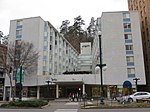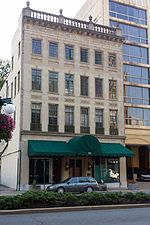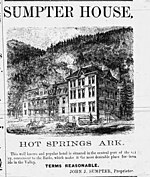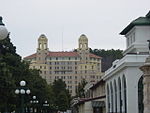First Presbyterian Church (Hot Springs, Arkansas)
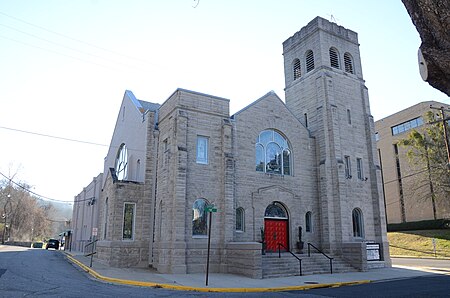
The First Presbyterian Church is a historic church at 213 Whittington Avenue in Hot Springs, Arkansas. It is a large stone building, designed by Charles L. Thompson in Late Gothic Revival style and built in 1907. It has a square tower with pronounced buttressing at the corners set on the right side of its front facade, and a lower tower at the left side, with a gabled entry section at the center. The entrance is set in a broad lancet-arched opening, and is topped in the gable by a three-part stained glass window. The main sanctuary space is set perpendicular to the main facade, with a large stained glass window set in a recessed round-arch panel at the end. An entrance into the tunnels underneath hot springs is also located here.The church was listed on the National Register of Historic Places in 1982.
Excerpt from the Wikipedia article First Presbyterian Church (Hot Springs, Arkansas) (License: CC BY-SA 3.0, Authors, Images).First Presbyterian Church (Hot Springs, Arkansas)
Water Street, Hot Springs
Geographical coordinates (GPS) Address Nearby Places Show on map
Geographical coordinates (GPS)
| Latitude | Longitude |
|---|---|
| N 34.516111111111 ° | E -93.059166666667 ° |
Address
Water Street 146
71901 Hot Springs
Arkansas, United States
Open on Google Maps



